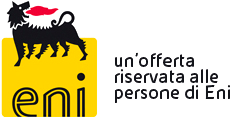A negative NPV indicates that the investment or project is expected to result in a net loss in value, making it an unattractive opportunity. In this case, decision-makers should consider alternative investments or projects with higher NPVs. Unlike the NPV function in Excel – which assumes the time periods are equal – the XNPV function takes into account the specific dates that correspond to each cash flow. Both NPV and ROI (return on investment) are important, but they serve different purposes.
Someone on our team will connect you with a financial professional in our network holding the correct designation and expertise. Our mission is to empower readers with does prepaid rent affect net income the most factual and reliable financial information possible to help them make informed decisions for their individual needs. Our team of reviewers are established professionals with decades of experience in areas of personal finance and hold many advanced degrees and certifications. For information pertaining to the registration status of 11 Financial, please contact the state securities regulators for those states in which 11 Financial maintains a registration filing. In closing, the project in our example exercise is more likely to be accepted because of its positive net present value (NPV). By submitting this form, you consent to receive email from Wall Street Prep and agree to our terms of use and privacy policy.
Cash Flow Projections
Net Present Value (NPV) is the value of all future cash flows (positive and negative) over the entire life of an investment discounted to the present. Now, this is not always the case, since cash flows typically are variable; however, we must still account for time. The way we do this is through the discount rate, r, and each cash flow is discounted by the number of time periods that cash flow is away from the present date. This means that our cash flow for the first time period of the project would be discounted once, the cash flow in the second time period would be discounted twice, and so forth. To discount a cash flow, simply divide the cash flow by one plus the discount rate, raised to the number of periods you are discounting.
This concept is the foundation of NPV calculations, as it emphasizes the importance of considering the timing and magnitude of cash flows when evaluating investment opportunities. The net present value (NPV) represents the discounted values of future cash inflows and outflows related to a specific investment or project. A notable limitation of NPV analysis is that it makes assumptions about future events that may not prove correct. The discount rate value used is a judgment call, while the cost of an investment and its projected returns are necessarily estimates.
If the present value of these cash flows had been negative because the discount rate was larger or the net cash flows were smaller, then the investment would not have made sense. Imagine a company can invest in equipment that would cost $1 million and is expected to generate $25,000 a month in revenue for five years. Alternatively, the company could invest that money in securities with an expected annual return of 8%. It accounts for the fact that, as long as interest rates are positive, a dollar today is worth more than a dollar in the future. In the context of evaluating corporate securities, the net present value calculation is often called discounted cash flow (DCF) analysis.
- An investor can perform this calculation easily with a spreadsheet or calculator.
- It takes into account the time value of money, which means that a dollar today is worth more than a dollar received in the future.
- By paying this price, the investor would receive an internal rate of return (IRR) of 10%.
By paying this price, the investor would receive an internal rate of return (IRR) of 10%. By paying anything less than $61,000, the investor would earn an internal rate of return that’s greater than 10%. The first point (to adjust for risk) is necessary because not all businesses, projects, or investment opportunities have the same level of risk. Put another way, the probability of receiving cash flow from a US Treasury bill is much higher than the probability of receiving cash flow from a young technology startup. The discount rate used in NPV calculations is a critical factor in determining the result. A higher discount rate will result in a lower NPV, while a lower discount rate will result in a higher NPV.
Let’s look at an example of how to calculate the net present value of a series of cash flows. As you can see in the screenshot below, the assumption is that an investment will return $10,000 per year over a period of 10 years, and the discount rate required is 10%. In addition to factoring all revenues and costs, it also takes into account the timing of each cash flow, which can result in a large impact on the present value of an investment. For example, it’s better to see cash inflows sooner and cash outflows later, compared to the opposite. NPV is an essential tool for financial decision-making because it helps investors, business owners, and financial managers determine the profitability and viability of potential investments or projects.
Net Present Value Calculator
NPV accounts for the time value of money and can be used to compare the rates of return of different projects or to compare a projected rate of return with the hurdle rate required to approve an investment. The second point (to account for the time value of money) is required because, due to inflation, interest rates, and opportunity costs, money is more valuable the sooner it’s received. For example, receiving $1 million today is much better than the $1 million received five years from now. If the money is received today, it can be invested and earn interest, so it will be worth more than $1 million in five years’ time. Also, it does not reflect earnings past this period and can’t account for sharp movements in the cash flow.
Ask a Financial Professional Any Question
Of course, if the risk is more than double that of the safer option, the investment might not be wise, after all. Where r is the discount rate and t is the number of cash flow periods, C0 is the initial investment while Ct is the return during period t. For example, with a period of 10 years, an initial investment of $1,000,000 and a discount rate of 8% (average return from an investment of comparable risk), t is 10, C0 is $1,000,000 and r is 0.08. Net Present Value is a critical tool in financial decision-making, as it enables investors and financial managers account balance definition to evaluate the profitability and viability of potential investments or projects. The payback period is the time required for an investment or project to recoup its initial costs. Shorter payback periods are generally more attractive, as they indicate faster recovery of the initial investment.
Step 1: NPV of the Initial Investment
We’ll now move to a modeling exercise, which you can access by filling out the form below. If the net present value is positive, the likelihood of accepting the project is far greater.
Dependence on Accurate Cash Flow Projections
The reliability of NPV calculations is highly dependent on the accuracy of cash flow projections. Inaccurate projections can lead to misleading NPV results and suboptimal decision-making. Investors use NPV to evaluate potential investment opportunities, such as stocks, bonds, or real estate, to determine which investments are likely to generate the highest returns.
Another way to understand what is meant by “present value” is to consider a situation in which one considers a business investment of $500,000 expected to bring a cash flow of $50,000 in one year time or a return on capital of 10%. If the cost of capital is 11% per year then the present value of that $50,000 income stream is in fact negative (-$4,504.50 to be exact) meaning that the return does not justify the investment. However, if the cost of capital can be reduced to 5% then the present net worth of this same cash flow would become 23,810 USD signalling a more efficient use of capital so it would be worthwhile to undertake the business venture. A positive NPV indicates that the projected earnings from an investment exceed the anticipated costs, representing a profitable venture. A lower or negative NPV suggests that the expected costs outweigh the earnings, signaling potential financial losses.


0 responses on "Net Present Value NPV Formula + Calculator"